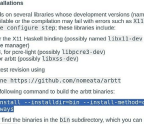
Tracker music first arrived in the early ’80s on the Commodore Amiga series of T computers thanks to a program called The Ultimate Soundtracker. This music application and its clones laid down the foundation for the entire tracker music scene, a scene that is still alive today. Because tracker files contain the note data that makes up the song alongside the sample data for the instruments, it was quickly embraced as an ideal format for game music as well as by amateur musicians who wanted to share their music.
Right from the beginning, music trackers attracted a huge community, and it helped that the format was open from early on. This meant musicians could open existing trackers to see how they work, while programmers could develop their own tools, players and editors. At this point, there are tens of thousands of tracker tunes floating around the internet, and there are modern tools to create and play tracker tunes.

The tracker interface is different from a typical music sequencer, and it’s particularly attractive to programmers and non-musicians. Rather than having to learn musical notation or the skills needed to play an instrument, the user works with columns of numbers and letters, each column representing a single sound channel. As often as not, the QWERTY keyboard is used rather than a music keyboard to input the notes. Considering the spreadsheet-like interface, mixed with the immediate gratification of keyboard bashing to make the sounds, no wonder trackers have always appealed to the amateur who wanted to make a tune. Here we’re looking at how trackers evolved and what it takes to work with trackers on Linux PCs now.
Commodore Amiga
Did you know that the Commodore Amiga was originally going to be the Atari Amiga? A chap called






